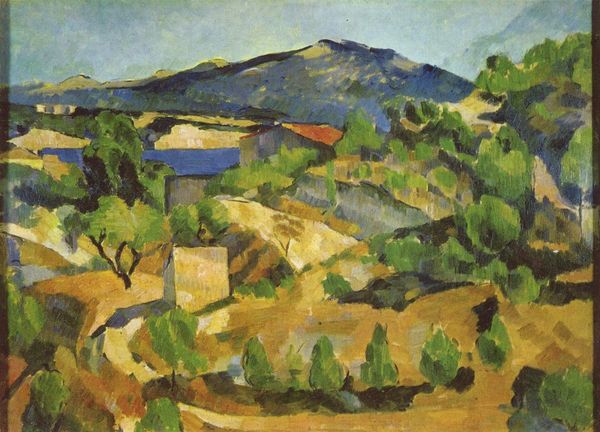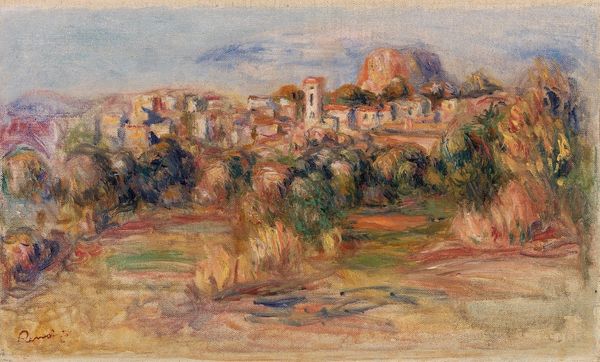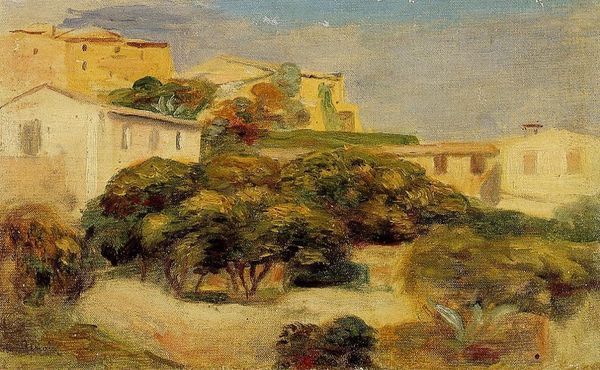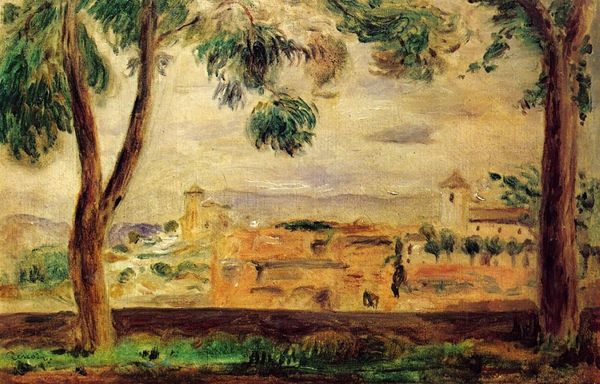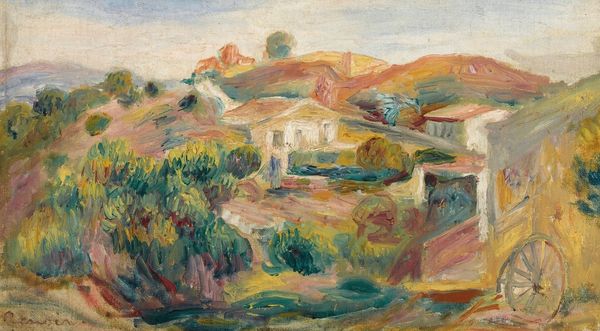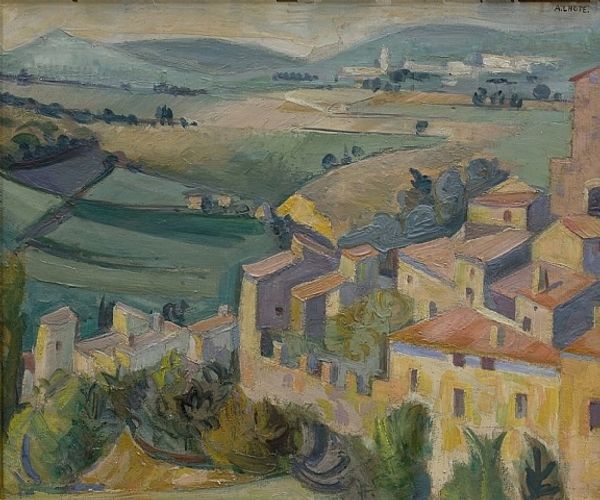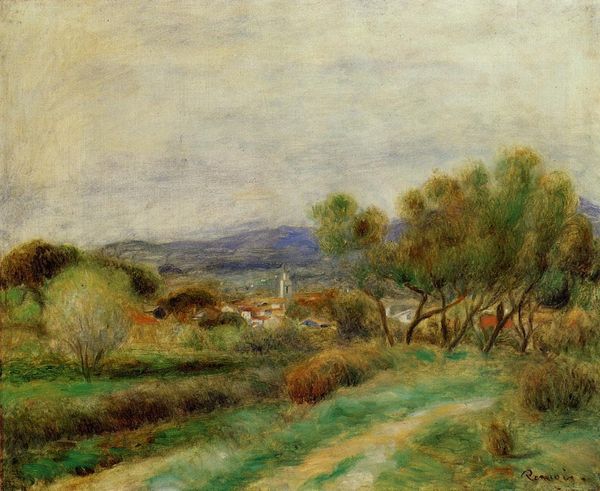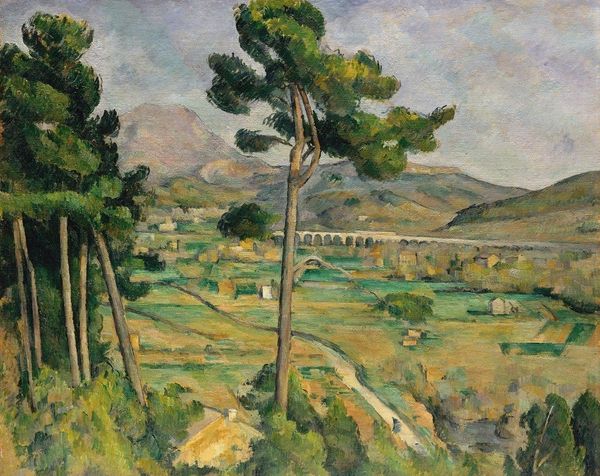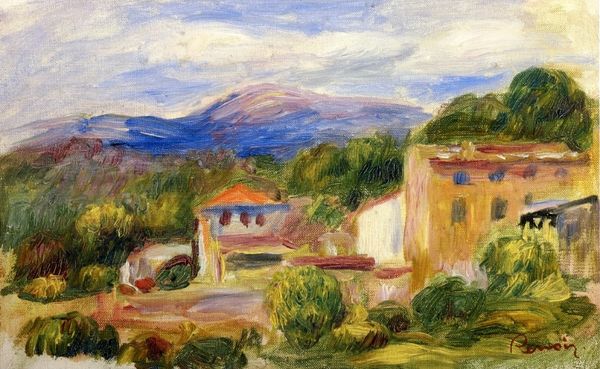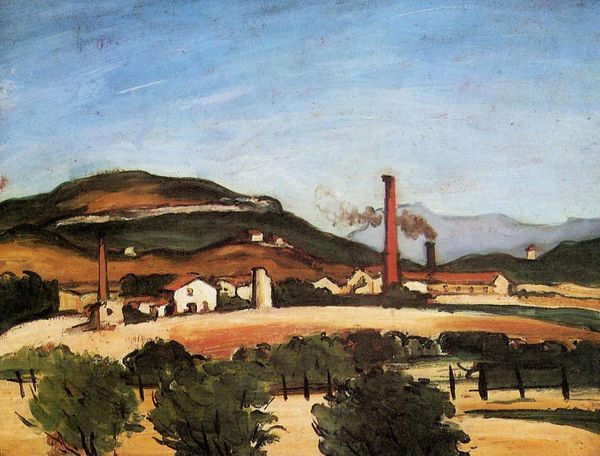
Copyright: Public domain
Curator: Looking at this piece, titled "Cros de Cagnes," dating to 1905, painted by Pierre-Auguste Renoir...it gives me such a feeling of peace, an airy dreaminess. Editor: It evokes a sort of faded postcard, doesn't it? There's something almost obscured about it, a layering of the present onto a historical setting, like memories blurring together. I almost sense an ambivalence regarding the depiction of labour; you know, was he capturing the true struggles of a humble community, or simply exoticizing the south of France to indulge an elite gaze? Curator: That's interesting. To me, the haziness lends the town an ethereal quality. You notice the two towers standing guard, don't you? Such forms, and their recurrence in artistic depictions of communities, speak to fundamental human needs of stability and faith. They are the archetypal symbols. Editor: Precisely! The church towers could be a deliberate symbol, standing watch over what could also be interpreted as Renoir’s ideal “good life.” But considering his affluent circle, it is necessary to understand who enjoyed and enabled that life. How did colonial infrastructures shape this artistic lens? And perhaps this lens romanticizes the hardships endured by many who resided in this community? Curator: I think the broken brushstrokes, almost dissolving the forms, soften any sense of judgment or assertion. Renoir's Impressionistic style makes it less a document, and more an impression, of a place. Even his choice of light becomes symbolic; light not as stark illumination, but a diffused, all-enveloping presence, much like grace itself. Editor: That use of light feels like an indulgence, creating a buffer against truly reckoning with the social inequities prevalent during that era. The scene becomes, perhaps inadvertently, a reinforcement of a romantic fantasy. Curator: Still, consider the role of visual memory. Does Renoir unknowingly remind us of simpler times? It provides continuity between past and present in ways that help orientate cultural identity... Editor: Or, perhaps it merely offers an escape that obscures systemic inequalities, inviting nostalgia without prompting meaningful change. Food for thought. Curator: Yes, very well said. Art always offers multiple reflections, doesn't it? Editor: Exactly. And in this dialogue between impression and socio-political impact, lies its ongoing resonance.
Comments
No comments
Be the first to comment and join the conversation on the ultimate creative platform.
